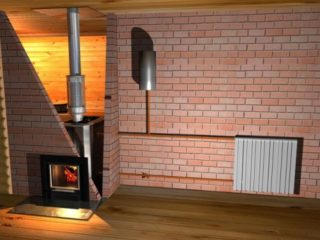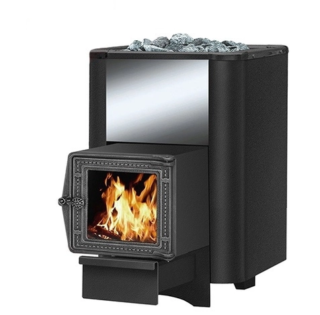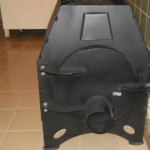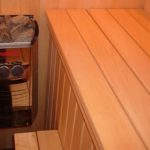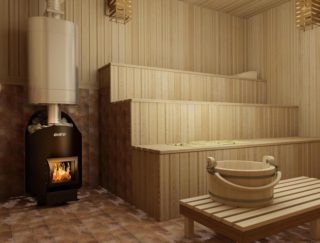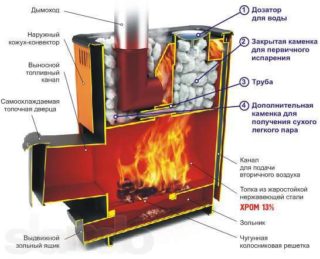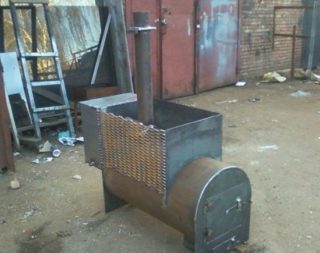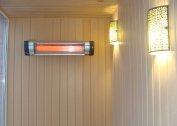Any bath must have a boiler or stove. They are used to heat water and create heat in the steam room. There are many varieties of bath boilers, the differences of which must be understood for the right choice. You can also make a boiler yourself in the bathhouse.
The difference between the boiler and the furnace
Fuel burns out in the firebox of the sauna stove, resulting in the formation of ashes, volatile substances and thermal energy. The body of the structure heats objects and contact surfaces. They, in turn, due to convection heat the room. The boiler has a different operating principle. Fuel also burns in the chamber and energy is generated, but its distribution occurs due to air circulation.
The advantages of the boiler include:
- The absence of "dead zones". The process becomes predictable and manageable.
- It is possible to install single and multi-circuit boilers. The first heats the bath itself, and additional circuits perform other tasks: heating water, supporting the work of a warm floor.
- There are devices with automated control. This greatly facilitates operation.
- More thought-out designs and high functionality make boilers more attractive for installation in a bathhouse. They also have higher efficiency and are economical in terms of fuel used.
- Installing a boiler yourself is easier than a full-fledged brick oven.
- Can heat large rooms.
For a full bath with several compartments, it is better to choose a boiler for heating.
Varieties of boilers
A boiler for a bath is a device that performs 3 main functions: bringing stones to a hot state, heating water and heating a room.
Boilers can be divided into several groups according to the type of fuel used:
- Solid fuel. Coal, firewood, peat are used as raw materials. Such devices retain heat for a long time and do not require connection to an additional power source. Operation is quite expensive, so it is better to install them only for heating water in the washing room. Cannot work in automatic mode, emits dust from coal during operation. Requires regular cleaning.
- Electric. They operate from the mains and are an ordinary water boiler. Installation of such equipment is inexpensive, but it can not be called economical because of the waste of electricity. They are rarely used due to the need for a three-phase network with increased power. The positive aspects of the electric boiler include environmental friendliness, cleanliness in the room and the ability to work in automatic mode. Suitable for installation in a small bathhouse as an additional source of hot water.
- Gas. The role of fuel is gas. One of the most effective and profitable types of heating appliances. It is distinguished by its compact design, ease of operation and multifunctionality. The user does not need to constantly purchase fuel. No odor or burning. It is explosive, therefore it is forbidden to assemble such devices with your own hands. There are single-circuit for small baths, double-circuit for heating water and heating the dressing room and three-circuit for heating the pool (if available).
- Liquid fuel products. It can be kerosene, diesel, diesel fuel. The advantages include automation, safe and fast operation, the allocation of a small amount of burning. No installation permission required. The main disadvantages are the strong smell when burning raw materials, the fire hazard of diesel fuel, the need for strict compliance with the installation requirements of all parts of the equipment.
- Gas
- Liquid fuel
- Electric
Classification is also made according to the material from which the boiler is made. Cast iron models are not used, as it is forbidden to install them in the steam room. The most popular materials for the boiler in the steam room are:
- iron;
- brick;
- bricked iron.
Thanks to modern technology, the size of the boilers is significantly reduced. A miniature heater can even be placed in a small bathhouse.
Criterias of choice
On sale is a large selection of boilers for a bath. It is difficult for a beginner to understand the features and differences of each species. The following criteria must be used:
- The area of heating. The larger it is, the more powerful the boiler will be required. For baths, the value of thermal power is 1.27. This means that for heating a room with an area of 30 sq.m. and ceiling heights of up to 2.3 m every hour will require 3.8 kW of energy. In the absence of high-quality thermal insulation, this indicator increases, since there will be heat losses. If there is a water heater, the value will also increase.
- The choice of the optimal type of fuel. In the case of a wood-fired bathhouse, it is necessary to foresee a place where the wood will be stored. Raw material costs should also be taken into account.
- Material. Most often, boilers are made from different types of steel. The water tank is selected from stainless steel for long-term operation. Cast iron boilers are not used in the bath.
- Product design. Here we consider the presence of an external firebox, the ability to adjust traction.
- Dimensions
- The ability to rationally stack stones. If you are installing a wood-fired sauna boiler, it is important to provide a place for stone laying. Steam comes from the stones to the steam room when sprayed with water. When creating such a place, it is important to consider several factors. The larger the volume of the masonry, the more intensively the boiler operates and retains heat longer. At the same time, more time is spent on heating. The second factor is the location of the basket in the boiler piping. It is necessary that the stones are heated in full and receive maximum heat.
The market offers models for each specific case. It is also possible to make bath boilers to order for the requirements stated by the buyer.
Installation Rules
After selecting and buying the optimal model, you can proceed to install the heating device in the room. This can be done with the help of professionals or on your own. When working, the following rules must be observed:
- If the weight of the unit exceeds 400 kg, a foundation foundation is necessarily made. It will also be required if there are logs with a section of less than 150 × 50 mm and boards up to 40 mm thick in the floor structure. If you do not make the foundation, the floor will not withstand the equipment.
- It is necessary to make a fireproof surface on which the boiler will be installed. The material may be a metal sheet laid on a layer of mineral wool, or ceramic tile.
- The installation will require the use of a welding machine. Such work must be carried out in a safe manner. The craftsman must be qualified to do the welding. Personal protective equipment is also needed. The welding machine is connected to a separate power line, as it has more power.
- Compliance with GOST and SNiP requirements for the distance from the boiler to the surfaces of the floor, ceiling and walls.
- All smoke-removing elements must be packed in thermally insulating sleeves. Particular attention should be paid to working out joints.
Two people with sufficient qualifications can install the boiler. It is difficult to install the device alone, since it has a large weight.
DIY creation
If you have the skills you can make a boiler yourself.
First you need to choose the type of fuel. It is not recommended to independently manufacture electric and gas products, since the risk of an emergency increases. In addition, the gas boiler must be checked by the appropriate service for safety and correct operation. All these actions require large financial investments, therefore it is better to buy a ready-made device or assemble a solid fuel installation.
The bath boiler consists of the following parts:
- Firebox. In this part, the combustion process takes place.
- Chimney. Serves for removal of combustion products from the room.
- Ashpit. It is a place of accumulation of ash and serves as a blower.
- Kamenka. This is the main part, consisting of a metal box with stones. When in contact with water, the stones give off steam to the room.
- Hot water tank.
The iron boiler has a simple design. Before starting work, it is important to study the drawings and purchase the necessary equipment.
As a basis, you can take thick-walled metal pipes with a diameter of 50 cm and a length of 70-100 cm. The resulting device can heat an area of 9 sq.m.
During the creation of a boiler for a bath with his own hands, the master will need the following tools:
- welding machine;
- grinder and circles for metal.
After preparing the materials, you can proceed to work.
Construction welding
Do-it-yourself welding algorithm for a boiler in a bathhouse:
- The body of the device consists of a pipe. In it you need to make three supports parallel to the ground at different levels. To do this, take pieces of reinforcement 3 cm long and 1.4 cm in diameter. The first level is for installing the device, the second for the blower door, the third at a distance of 20 cm from the top.
- For the bottom, a circle with a pipe diameter cut out of steel is suitable. 5 mm minimum thickness. You can’t take less, otherwise the bottom will not withstand the load.
- Creating a grate to supply oxygen. It is made of a metal circle with the maximum allowable thickness with slots.
- The cover, which acts as a support for the stones, is also cut out of a steel sheet 5 mm thick. In the middle you need to make a hole for the chimney pipe.
- Creating a hole in the bottom of the pipe for the duct, which is closed by a door. The depth of the box is determined by the thickness of the walls.
- Creating a box. Inside should be a partition for the furnace and ash chambers. The level of the septum is the same as that of the grate.
Then you can proceed to the final assembly of the unit.
Final assembly of the structure
The process consists of several stages:
- Welding the box. In the case of work indoors, he must go to the furnace compartment or to the street.
- Installing the chimney in the hole on the cover in a horizontal position.
- The construction of the foundation. An iron plate or concrete screed 10 cm thick is suitable for it. The screed must be poured onto a 15 cm crushed stone pillow.
- Installation of the structure on the base. Laying stones on the lid.
All parts must be welded together. Next, a brick thermal screen is made. To do this, the boiler can be completely lined with brick or a small wall can be made. Holes must be made in the lower part for air circulation.
After finishing work, you need to inspect the bath boiler and test the system.
